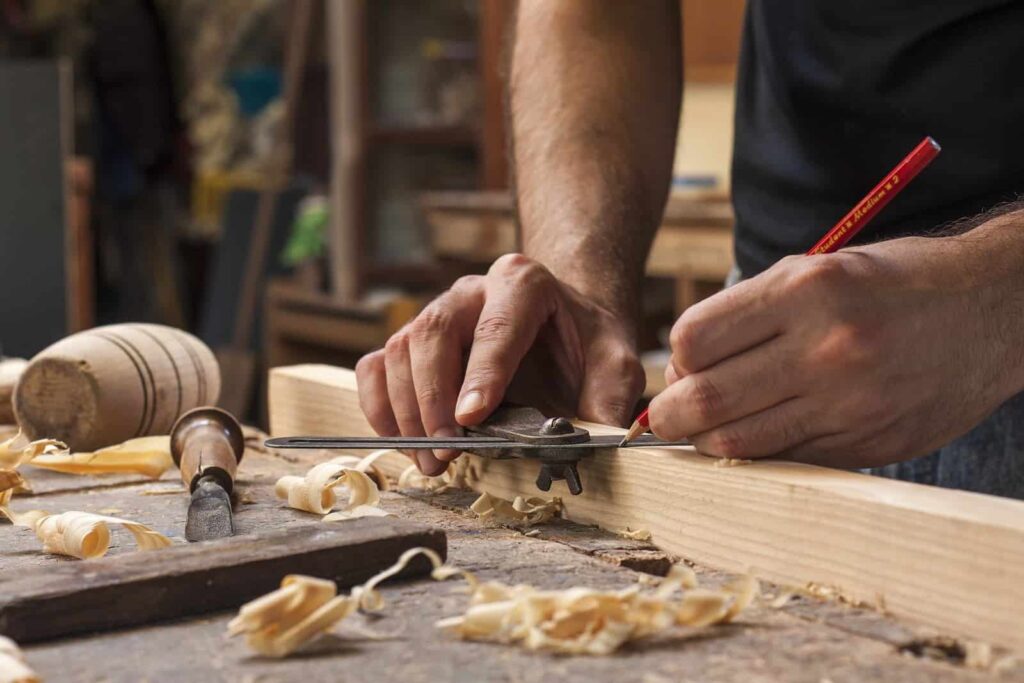
The success of any construction task, be it professional carpentry or weekend home improvement gigs, hinges on two core skills: precise cutting and clean edging. Nail these down early on to see remarkable results in your work. It takes more than just care – one has to combine laser-like precision with detailed observation skills and truly understand what they are dealing with. Whether you’re crafting bespoke furniture, fitting custom cabinetry, or simply adding finishing touches to a handmade project, the cut and edge stages are where the magic happens – and where many pitfalls await.
We can’t talk up these processes enough; they’re that important. Perfect cuts and flawless edges not only dictate the aesthetic quality of the finished piece but also its structural integrity and longevity. Imagine taking plain old materials and—through sheer creativity, precise planning, and skilled execution—turning them into functional pieces of beauty. That’s what it’s all about here. Imagine avoiding all missteps on your way through any cutting-edge project – that’s what this blog sets out to help you do! Tailored advice awaits inside for turning challenges into triumphs as we push towards perfection with each step.
Not Planning Your Project Thoroughly
Diving into any project without a comprehensive plan is akin to navigating unfamiliar territory without a map. The rush of beginning a fresh project often makes us overlook one key aspect – thorough planning. Yet without laying out a clear plan first, we might hit snags we could have easily avoided. Material waste stands out as a significant consequence, with improper calculations and hasty decisions often resulting in excess materials that go unused or incorrect cuts that render pieces unusable. Rushing past the planning stage might leave your final product looking a bit off and not working as smoothly, like putting together furniture without instructions.
A well-thought-out plan is your armor against unexpected snags. Start with your design measurements, add in a complete list of needed materials, and don’t forget a guide that walks you through each phase of execution. Keeping strict discipline helps us save up and streamline how we construct buildings, guaranteeing our finished projects mirror those first blueprints in your head.
Overlooking Material Selection
The choice of material can make or break a project. From the warmth of wood to the durability of metal and the versatility of plastics and composites – every material has unique characteristics that determine where it shines. If you’re going with hardwoods for their lasting beauty, remember you’ll need the right kind of tools to work on those edges. Conversely, softer woods are easier to work with but may not withstand the test of time in high-traffic areas.
Really getting the hang of your chosen material’s traits makes all the difference. Choosing the right materials means looking into their resistance to dampness, strength under pressure, and how compatible they are with sticky substances or protective coatings — ensuring everything fits just right for the task at hand.
Ignoring the Grain Direction in Wood
The grain direction in wood is not just a matter of aesthetics; it significantly influences the piece’s structural integrity and resilience. Wood grains denote the direction of the fibers within the timber, and cutting or edging against this orientation can weaken the final product, making it susceptible to damage under stress or over time.
How a piece comes alive often hinges on its grain pattern – it’s what ties the visual appeal together. Aligning the grains appropriately can enhance natural beauty, creating a piece that is not only strong but also pleasing to the eye. Paying attention to grain direction is a nuanced skill that, once mastered, elevates the quality of wood-centric projects substantially.
Miscalculating Edging Thickness
Edging, the process of applying a finish or veneer to the raw edges of materials like plywood or MDF, requires a precise match in thickness for a seamless appearance. A common mistake is not carefully measuring the edging material, leading to edges that may protrude awkwardly or, conversely, fail to cover the substrate fully.
To achieve a professional-grade finish, one must meticulously measure both the substrate and the edging material, ensuring a perfect match. Paying close attention to every little detail makes sure that the final touch not only looks spotless but also fully intentional, avoiding any eyesores like mismatched edges.
Skimping on Quality Control Measures
Quality control is an ongoing process that should accompany every stage of a cut and edge project. It’s not enough to assume that measurements are accurate, and materials are flawless. Think of it as steering a ship; constant monitoring lets us correct course quickly, avoiding potential errors that could lead to rougher seas down the line.
Implement a system of checks and balances where each critical milestone is reviewed for accuracy and quality. This might involve taking another look at cut pieces to make sure they fit just right, lining up edges with care, and putting structural bits through the wringer to see how tough they really are. High standards of quality control are the backbone of excellence in any project.
Underestimating the Importance of Accurate Measurements
In the world of cut and edge projects, the adage “measure twice, cut once” holds profound significance. When measurements miss the mark, it’s like knocking over the first domino. What follows is a cascade of issues – wasted materials and structural problems that could put your whole project at risk. Misfit pieces not only detract from the visual appeal but can also compromise the functionality and stability of the final build.
Cutting corners won’t do; taking the time to measure and mark accurately is crucial. Start by verifying your dimensions with precise measuring instruments prior to slicing away; this guarantees a snug fit that’s as strong as it is eye-catching.
Forgetting to Account for Kerf
Kerf refers to the material removed during the cutting process, essentially the width of the saw blade. Failing to account for kerf can lead to cut pieces being slightly smaller than planned, a critical oversight in projects requiring tight tolerances. For those shaping wood into cabinets or fine joinery, perfection isn’t an option; it’s a must-have.
Getting the hang of your saw blade’s kerf and factoring it into your cuts ensures every piece fits together just right. This forethought prevents the frustration of reworking or discarding pieces that are inadvertently sized too small.
Overlooking Climate and Environmental Factors
Materials, especially wood, are susceptible to environmental influences, such as humidity and temperature, which can lead to expansion, contraction, and warping. Ignoring these factors during the cutting and edging stages can result in finished pieces that fit perfectly under current conditions but become warped or misaligned with seasonal changes.
Remember, the success of what you’re creating deeply depends on its future home’s setting. Acclimatizing materials to their eventual surroundings before cutting and implementing techniques to allow for movement can ensure the longevity and durability of the project.
Neglecting Machine Calibration and Maintenance
The accuracy of cutting and edging equipment is pivotal in achieving precision in any project. Tools and machinery that are poorly maintained or incorrectly calibrated can produce inaccurate cuts, leading to wasted materials and time. Furthermore, dull blades or bits can result in rough, splintered edges that compromise the finish and structural integrity of the material.
To hit the mark of superior quality, it’s all about giving your gear frequent TLC. This way, every cut is crisp and accurate—just how true artisans like it. It’s all about getting the blades sharp, tweaking those guides just right, and making sure everything runs like butter.
Disregarding Professional Cut and Edge Services
For many DIY enthusiasts and even professionals, the lure of completing a project single-handedly is strong. However, the complexity and demands of certain cut and edge tasks can benefit significantly from the expertise, precision equipment, and experience of professional cut and edge services. Think of it this way – with these services, you get the best of both worlds. High-quality work that doesn’t break the bank or waste precious resources redoing tasks.
The right professionals don’t just bring their skills to the table; they sprinkle in that magic touch of detail, pushing projects from good straight up to fantastic. When you’re diving into complex or critical projects, having someone who’s a whiz with choosing materials, slicing them up perfectly, and adding those last details can be a game changer.
Conclusion


The intricate dance of cutting and edging in any project demands respect for the processes and recognition of the common pitfalls that can derail even the most meticulously planned endeavors. By acknowledging and addressing these risks — from planning to execution — craftsmen can ensure the success and longevity of their projects.
When we trip up, it’s really just an invite to get smarter – to polish our know-how and test out new strategies. Spotting these common slip-ups and actively dodging them sets you up for success right from the start. Whether opting to tackle a project independently or leaning on the expertise of professionals, the goal remains the same: achieving a perfect finish that stands the test of time. Aiming high in boosting performance at work calls for some outside expertise sometimes. Diving into professional consults or bespoke solutions doesn’t just level up competencies; it expands horizons too—leading straight towards goals met with pride and peers’ applause.
- 0shares
- Facebook0
- Pinterest0
- Twitter0



